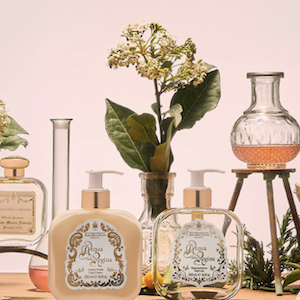Art For Change
By Bella Pallett
Art can be a powerful source to tap into during the fight for change and justice. By provoking human emotion, art can be crafted to address topics that otherwise can become overlooked. Indian transmedia artist, Poulomi Basu, has revealed her first major solo exhibition, ERUPTIONS, an immersive installation using three of her projects consisting of VR, film and photography in both gallery and cinema spaces. Image on left Untitled from the series Centralia, 2010-2020 © Poulomi Basu
.
Highlighting the marginalisation and strength of women and indigenous communities in South Asia, Poulomi Basu has perfected the craft of expanding the possibilities of traditional documentary photography by creating a multifaceted response through her three major acclaimed projects. The series Blood Speaks has achieved great political change in Nepal.
The projects, which have never been shown together advocate not only for political change but social and environmental too. Focusing on the Nepalese ritual of Chaupadi, Blood Speaks is a transmedia project highlighting how girls and women are exiled to shelters, not even classed as good enough for animals, while they are menstruating.

Untitled from the series, Blood Speaks, 2013-18 © Poulomi Basu
Focusing on the aspects of exile, isolation and courage, the project allows women to share their stories of extreme adversity. By placing menstrual health and blood politics on the international agenda, the series provoked major policy change, the Nepalese government criminalised the practice of menstrual exile. The success of this project is outstanding and highlights the strength that art holds as it can deeply tap into our emotions and provoke a human response.

Untitled from the series Centralia, 2010-2020 © Poulomi Basu
Centralia, another successful project, documents the violent conflict between a marginalised community of indigenous people fighting under the People’s Liberation Guerrilla Army and the Indian State. Largely unreported, the crime scenes are combined with mug shots of mostly female fallen fighters. The revolutionary fighters are placed against vibrant images of traditional festivals in rural communities to create a sharp juxtaposition, successfully celebrating their existence in a world that often erases them.
Mixing black and white with colour photography, Poulomi Basu’s final project in the trio documents the border between Indian and Pakistan. To Conquer Her Land follows India’s first-ever group of women soldiers of The Border Security Armed Force, deployed in the India-Pakistan border area of Punjab. Capturing the mobility of women from different castes and backgrounds and doing something extraordinary, this project is unlike any other and captures a true sense of resilience.

Untitled from the series Centralia, 2010-2020 © Poulomi Basu
It is incredible when change is brought about because of art, and much like Poulomi Basu, artist Sunil Gupta is working hard to command significant change with his new series of photographs. Exploring the legacy of the Pre-Raphaelites (an artistic movement founded in 1848) and their influence on contemporary art, The New Pre-Raphaelites presents marginalised and criminalised same-sex relations in moments of passion and love whilst addressing issues of sexuality and gender.
Commissioned by Autograph gallery in London to produce a body of work connected to LGBTQI+ rights in India, the series references the struggle against Section 377 of the Indian Penal Code. Instigated during British rule during the 1860s, Section 377, more commonly known as the Anti-Sodomy Law, criminalised gay sex between consenting adults. This remained in place until 2018 where it was repealed by the Supreme Court of India.
The law facilitated the exploitation of LGBTQI+ Indians and in turn, this drove a closeted culture which made researching and treating serious medical problems such as STDs and HIV/AIDS much more challenging.

Inspired by the vividness of colours and ambivalent sexuality explored through members of the Pre-Raphaelite Brotherhood, who were founded only a few years before Section 377 was introduced, Sunil Gupta used fellow friends and activists as models to create works that combine symbolism and realism.
The New Pre-Raphaelites series shows real insight into Sunil Gupta’s life and his involvement with issues of gender, sexuality, and his own diagnosis of being HIV positive in 1995. The tightly composed images force the viewer to confront the juxtaposition with alternate social realities as the private is transposed into the public.
These ‘truths’ that are reflective of Sunil Gupta’s own life are presented through gay couples, single men and women as well as groups who are caught in moments of passion and emotion. Concentrating on the real people who occupy the space of each print, Gupta successfully combines symbolism with realism. By showcasing content that would have been deemed criminal by Section 377, it is hoped now that they will be interpreted as acts of love and wholly accepted.

Untitled # 5, The New Pre-Raphaelites, 2008
Beautifully coloured, the richly textured and luxuriously patterned backdrops highlight the sitters’ colourful costumes and occasional nudity, whilst the reminder that although technically free from accusations of committing a crime, many risked a great amount to feature in the series, making the collection all the more powerful in its call for change.
Art can deeply evoke human emotions and elicit a human response from its audience, making it all the more powerful when addressing the need for change. Artists, like Poulomi Basu and Sunil Gupta, who have mastered the craft of emotion-charged art, continue to create pieces that fight for equality and understanding.
If you enjoyed reading this, read Rossetti and his It Girls here.
Find out more about ERUPTIONS by Poulomi Basu here.
Find out more about Sunil Gupta: The New Pre-Raphaelites here.





